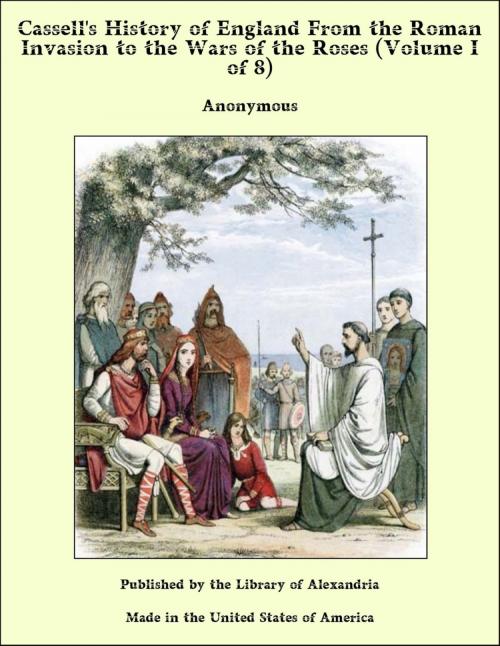Cassell's History of England: From the Roman Invasion to the Wars of the Roses (Volume I of 8)
Nonfiction, Religion & Spirituality, New Age, History, Fiction & Literature| Author: | Anonymous | ISBN: | 9781465617125 |
| Publisher: | Library of Alexandria | Publication: | March 8, 2015 |
| Imprint: | Language: | English |
| Author: | Anonymous |
| ISBN: | 9781465617125 |
| Publisher: | Library of Alexandria |
| Publication: | March 8, 2015 |
| Imprint: | |
| Language: | English |
Separated from the continent of Europe by the sea, the British isles were not known to the nations of antiquity until a somewhat late date. Herodotus was ignorant of their existence; but Strabo, a contemporary of Cæsar, tells us that the Carthaginians had for a long period carried on a considerable commerce with the Cassiterides, or tin-islands, which are usually identified with the Scilly islands, and doubtless included also part of the Cornish coast. Again, Pytheas, a merchant of Marseilles, who lived about 332 B.C., visited this country in the course of his life, and fragments of his diary are still extant. He seems to have coasted round a considerable portion of what is now England, and his observations on the inhabitants are singularly acute. About two centuries later, Posidonius, another Greek traveller, visited Belerion, as he called it—that is, Cornwall; but, until the invasion of Cæsar, the extent of these islands, their main geographical features, and the tribes that inhabited them, were practically a matter of more or less complete ignorance to the civilised world that dwelt round the shores of the Mediterranean. From the narrative of Cæsar, we gather that the bulk of the population of England, Scotland, and Wales at the time of his invasion was of Celtic origin; that is, it belonged to one of the branches of the great family of nations which is commonly known as the Indo-European, or Aryan, and which includes the Celts, the Greeks and Italians, the Germans, the Lithuanians and Slavs in Europe; and in Asia the Armenians, Persians, and the chief peoples of Hindustan. Of the Aryan nations, the Celts were probably the first to arrive in Europe from the East, though the date of their migration is purely conjectural. They pushed across the great central plateau, until the vanguard reached the ocean; and at first probably occupied a very large portion of Europe, but, being driven out by the stronger Germans, were gradually confined to the Iberian peninsula, France, Switzerland, and the British isles.
Separated from the continent of Europe by the sea, the British isles were not known to the nations of antiquity until a somewhat late date. Herodotus was ignorant of their existence; but Strabo, a contemporary of Cæsar, tells us that the Carthaginians had for a long period carried on a considerable commerce with the Cassiterides, or tin-islands, which are usually identified with the Scilly islands, and doubtless included also part of the Cornish coast. Again, Pytheas, a merchant of Marseilles, who lived about 332 B.C., visited this country in the course of his life, and fragments of his diary are still extant. He seems to have coasted round a considerable portion of what is now England, and his observations on the inhabitants are singularly acute. About two centuries later, Posidonius, another Greek traveller, visited Belerion, as he called it—that is, Cornwall; but, until the invasion of Cæsar, the extent of these islands, their main geographical features, and the tribes that inhabited them, were practically a matter of more or less complete ignorance to the civilised world that dwelt round the shores of the Mediterranean. From the narrative of Cæsar, we gather that the bulk of the population of England, Scotland, and Wales at the time of his invasion was of Celtic origin; that is, it belonged to one of the branches of the great family of nations which is commonly known as the Indo-European, or Aryan, and which includes the Celts, the Greeks and Italians, the Germans, the Lithuanians and Slavs in Europe; and in Asia the Armenians, Persians, and the chief peoples of Hindustan. Of the Aryan nations, the Celts were probably the first to arrive in Europe from the East, though the date of their migration is purely conjectural. They pushed across the great central plateau, until the vanguard reached the ocean; and at first probably occupied a very large portion of Europe, but, being driven out by the stronger Germans, were gradually confined to the Iberian peninsula, France, Switzerland, and the British isles.















